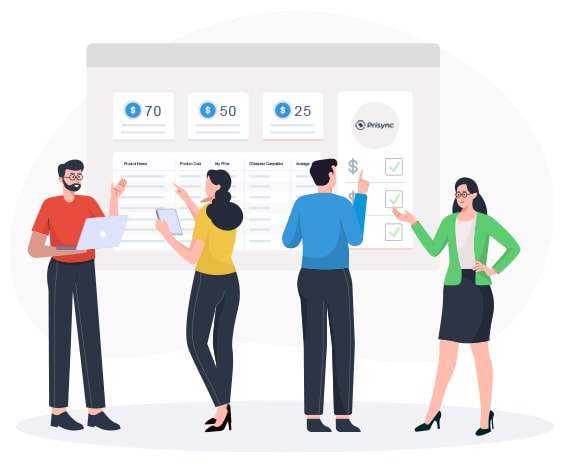
You've probably heard the term "minimum advertised price" (MAP) before, but what does it actually mean? And more importantly, how can you automate it for your business? In this guide, we'll break down everything you need to know about MAP and walk you through the steps to automate it. Let's get started!
Minimum Advertised Price, or MAP, is a policy that brands use to protect their pricing structure and stop people from lowering their prices. It's the lowest price a brand lets its authorized sellers advertise a product for.
MAP is usually set by the manufacturer, and it's up to the authorized sellers to comply. If they don't, they could lose their relationship with the brand (and potentially their livelihood).
Why use MAP policies?
There are a few reasons why you might want to consider implementing a MAP policy for your business. First, it can help you protect your brand and your products. You can help make sure that your products aren't sold at a discount without your permission by setting a minimum price that stores can't advertise below.
This can help keep your brand's value in people's minds and keep them from leaving when prices drop. Second, MAP policies can help you control your distribution and protect your margins. When retailers are authorized to sell your products, they are more likely to stick to the MAP price, which means you're more likely to make a profit on each sale.
And finally, MAP policies can help you avoid channel conflict. When different retailers are selling your products at different prices, it can create confusion for customers and lead to tension between retailers. A MAP policy can help avoid all that by establishing a uniform price across all retailers.
What Are the Benefits of Automating MAP?
There are several benefits to automating your minimum advertised price policy. First and foremost, it makes sure that all retailers are held to the same standard, so that no one seller can undercut the others. It also lets you keep track of where and how much your products are being advertised, so you can make sure you're getting the most out of your money.
Most importantly, automated MAP enforcement prevents unauthorized sellers from price-gouging and undercutting your products, safeguarding your brand's reputation, and ensuring that customers pay a fair price for your goods.
What Is the Process of MAP Automation?
The first step is to track and collect the data you need. You can do this manually, but it's going to be a lot more work. The good news is that there are software platforms that can do this for you automatically.
Once you have the data, you need to analyze it to see if there are any patterns or outliers. This is where manual data entry becomes really tedious and time-consuming. But if you have the right software platform, this can be done automatically as well.
Once you've analyzed the data, you need to take action. This is where automated MAP comes in. With the right platform, you can automate pricing changes and set rules so that your prices are always at or below the MAP.
Automating MAP is a great way to save time and money, and it's a much more effective way to manage your pricing. If you're not already doing it, I highly recommend you consider it.
What should you consider before automating MAP?
Now that you know all there is to know about MAP, you might be considering automating the process to make things easier on yourself and your team. However, there are some things to think about first.
First, you need to make sure that your products are actually selling at or above MAP. If they're not, then it's not worth your time to automate the process because you're not going to be making any money off of them anyway.
Second, you need to have a clear understanding of what your discounting strategy is and how it fits into your overall business model. If you don't, then you run the risk of undercutting yourself and eating into your profits.
Last, but not least, you need to make sure that you have the right tools in place to automate MAP. There are a lot of different software options out there, so do some research and figure out which one is going to work best for you and your business.
How Can You Implement Automated MAP Policies?
There are a few ways you can automate your MAP policies. The first is to use software that can monitor your prices and make sure they stay in compliance with your MAP.
Setting up price rules in your eCommerce platform is another way to automate your MAP policies. This way, you can ensure that your prices are always updated and compliant with your MAP.
Lastly, you can integrate your MAP policies with your supplier contracts. This way, you can be sure that everyone who sells your products is following your MAP policies.
The best way to make sure that your MAP policies are always followed is to make them work automatically. By using software or setting up price rules, you can rest assured that your prices are always compliant with your MAP.
Conclusion
MAP is an important tool to protect your brand. It ensures that you set the price for your products and that retailers don’t undercut you, which could cause you to lose money. Automating your MAP can help to ensure that it’s implemented consistently.
